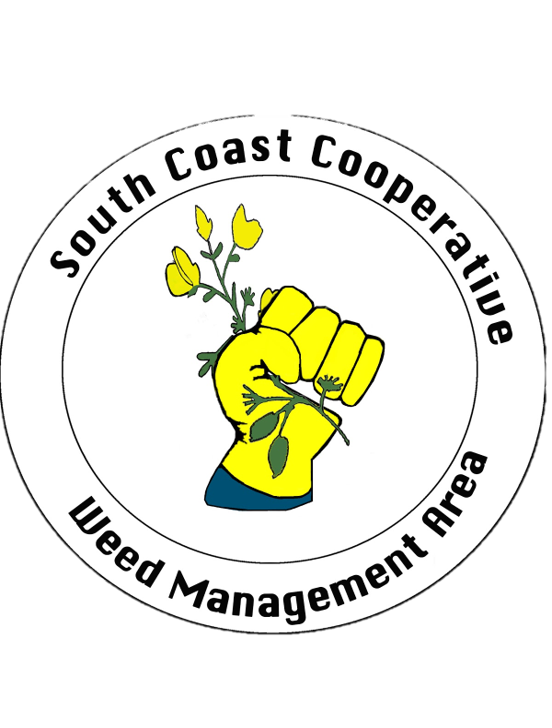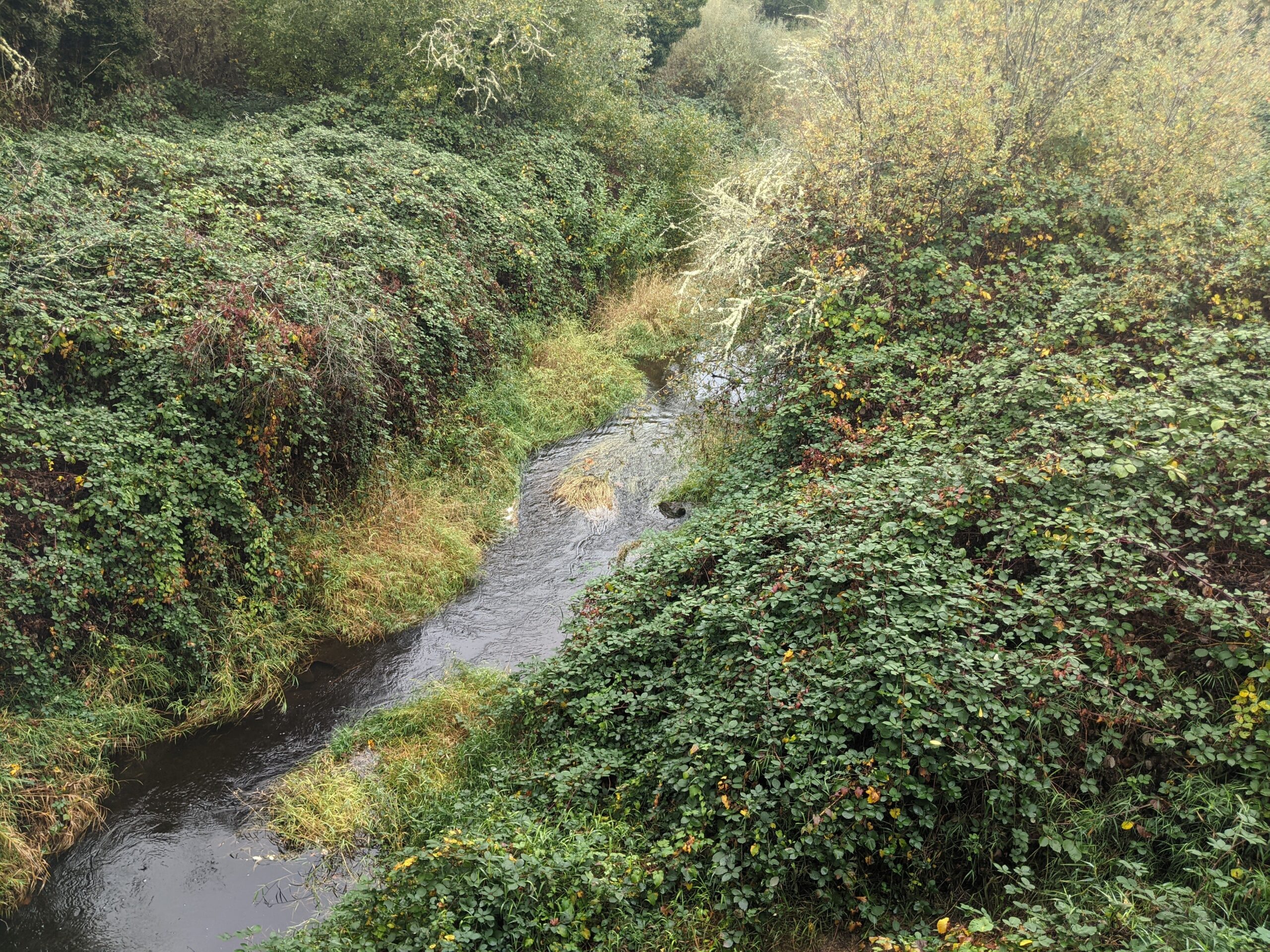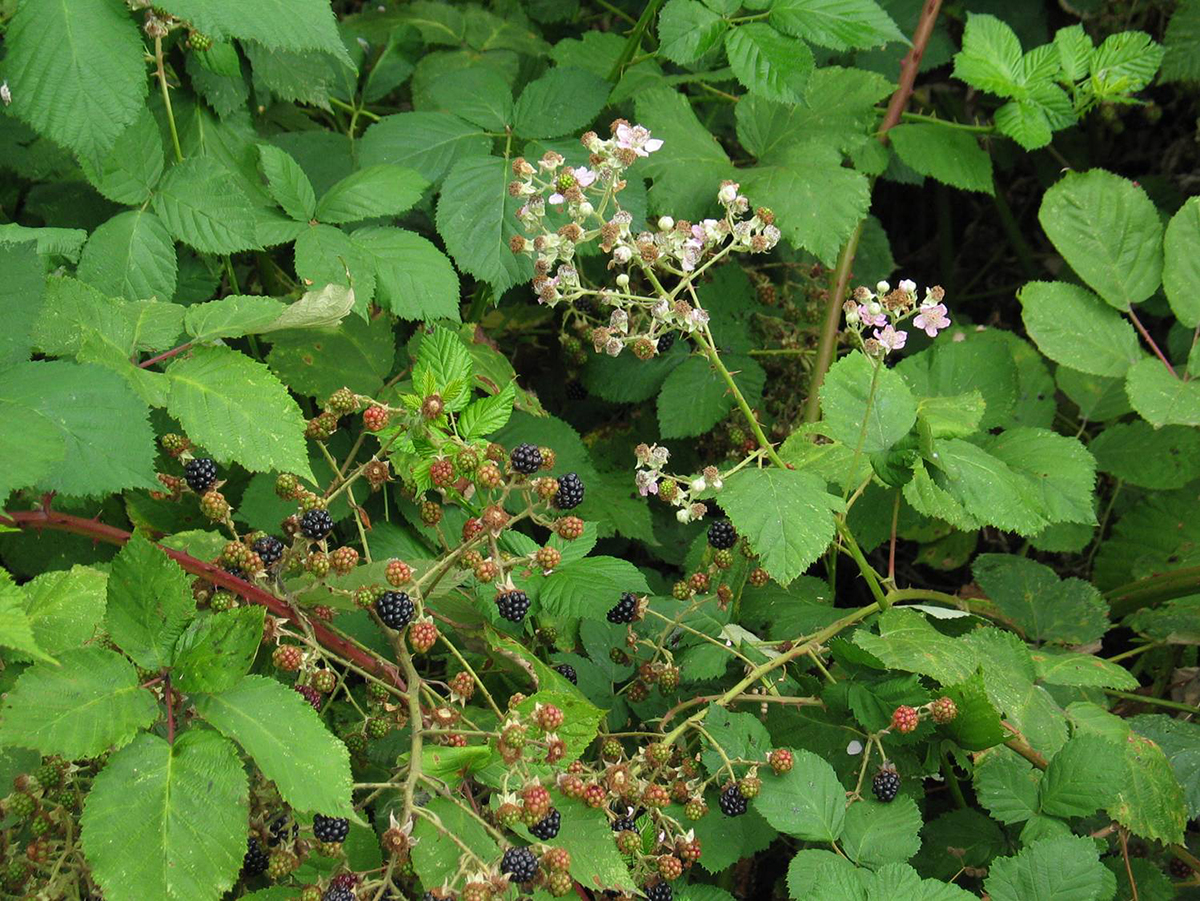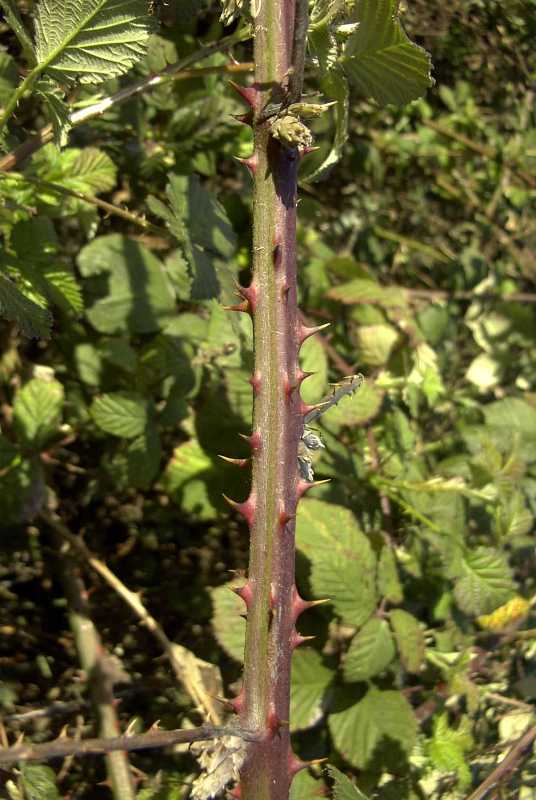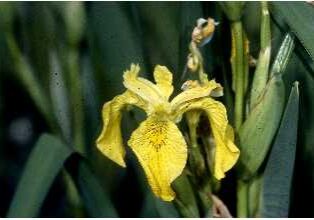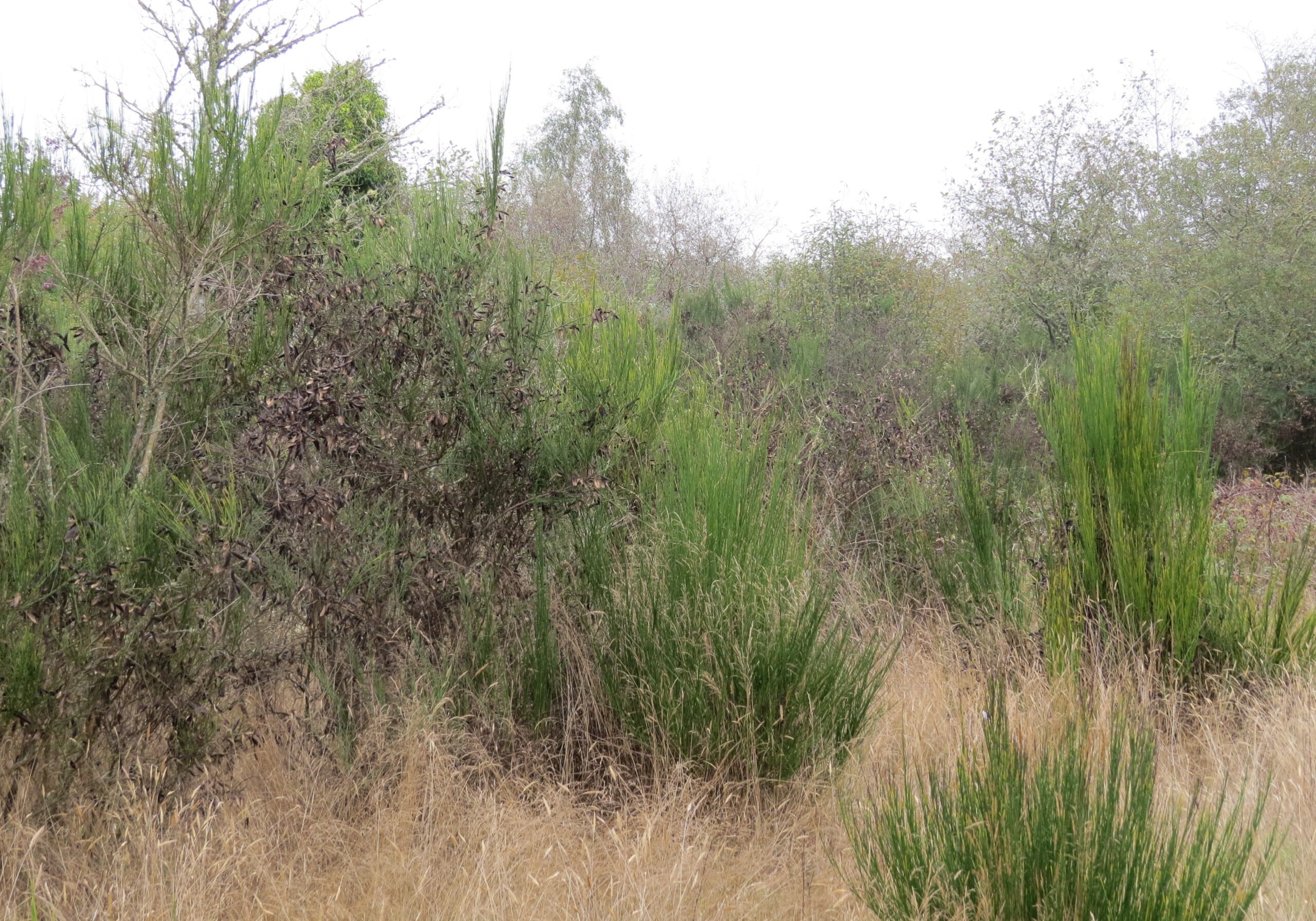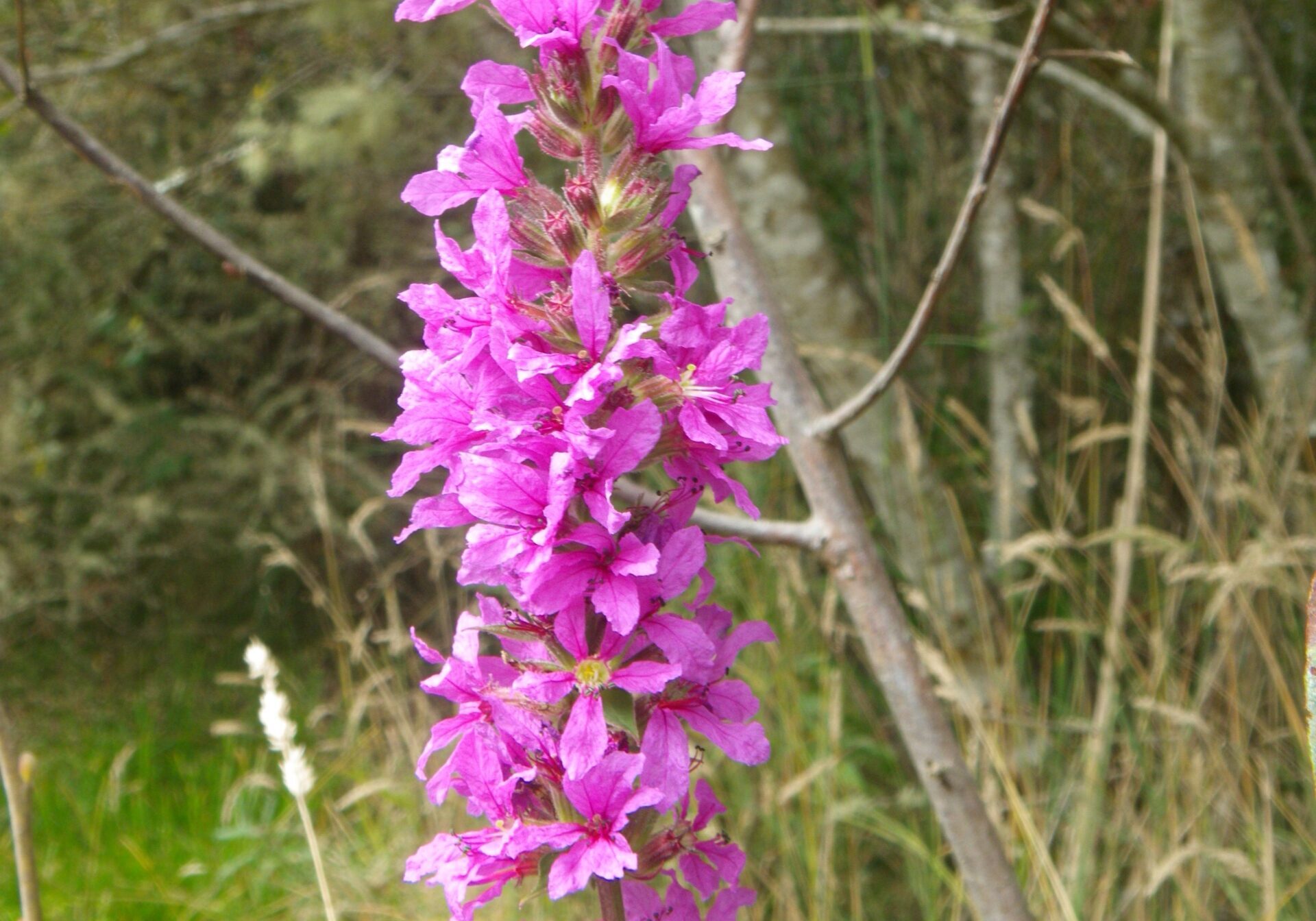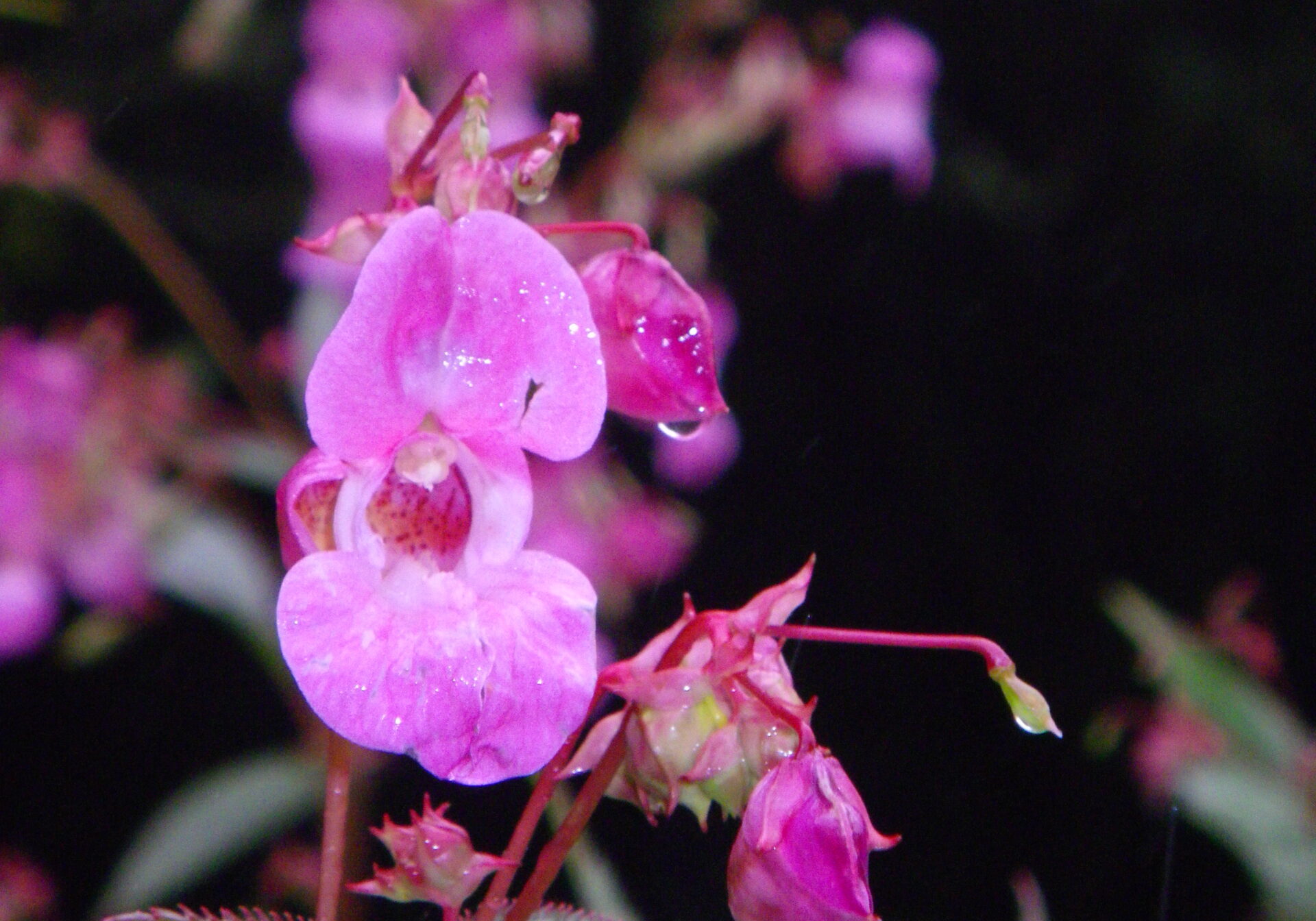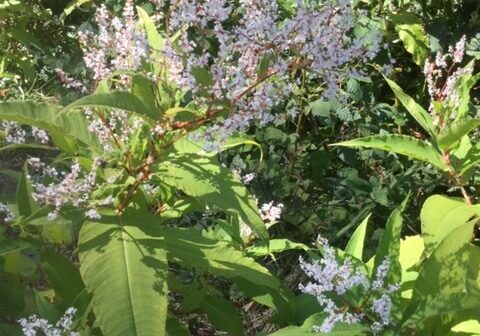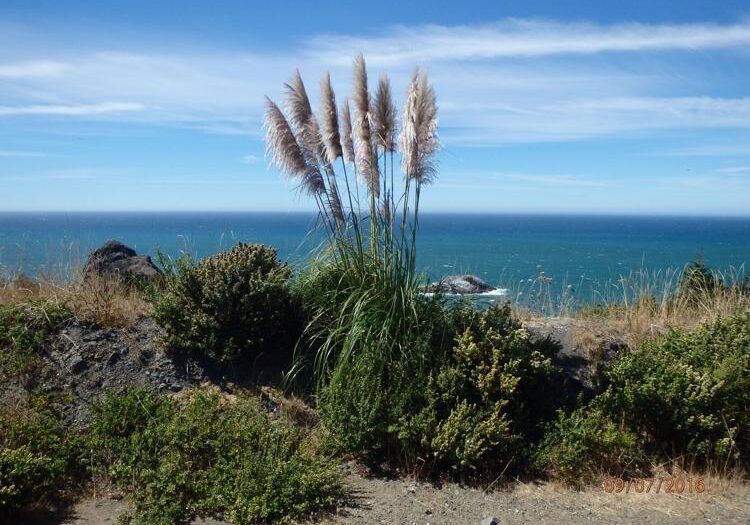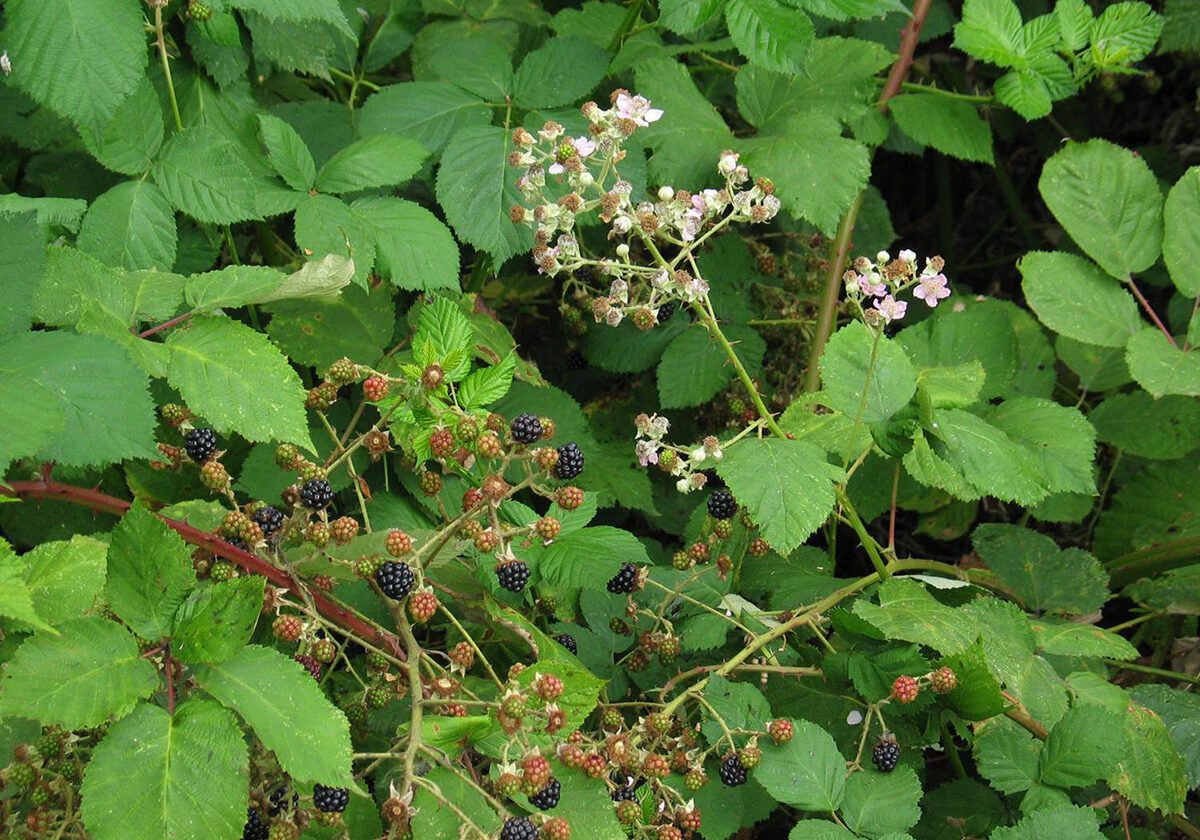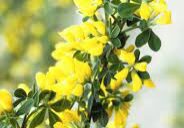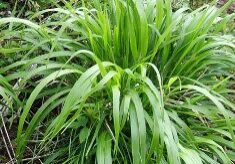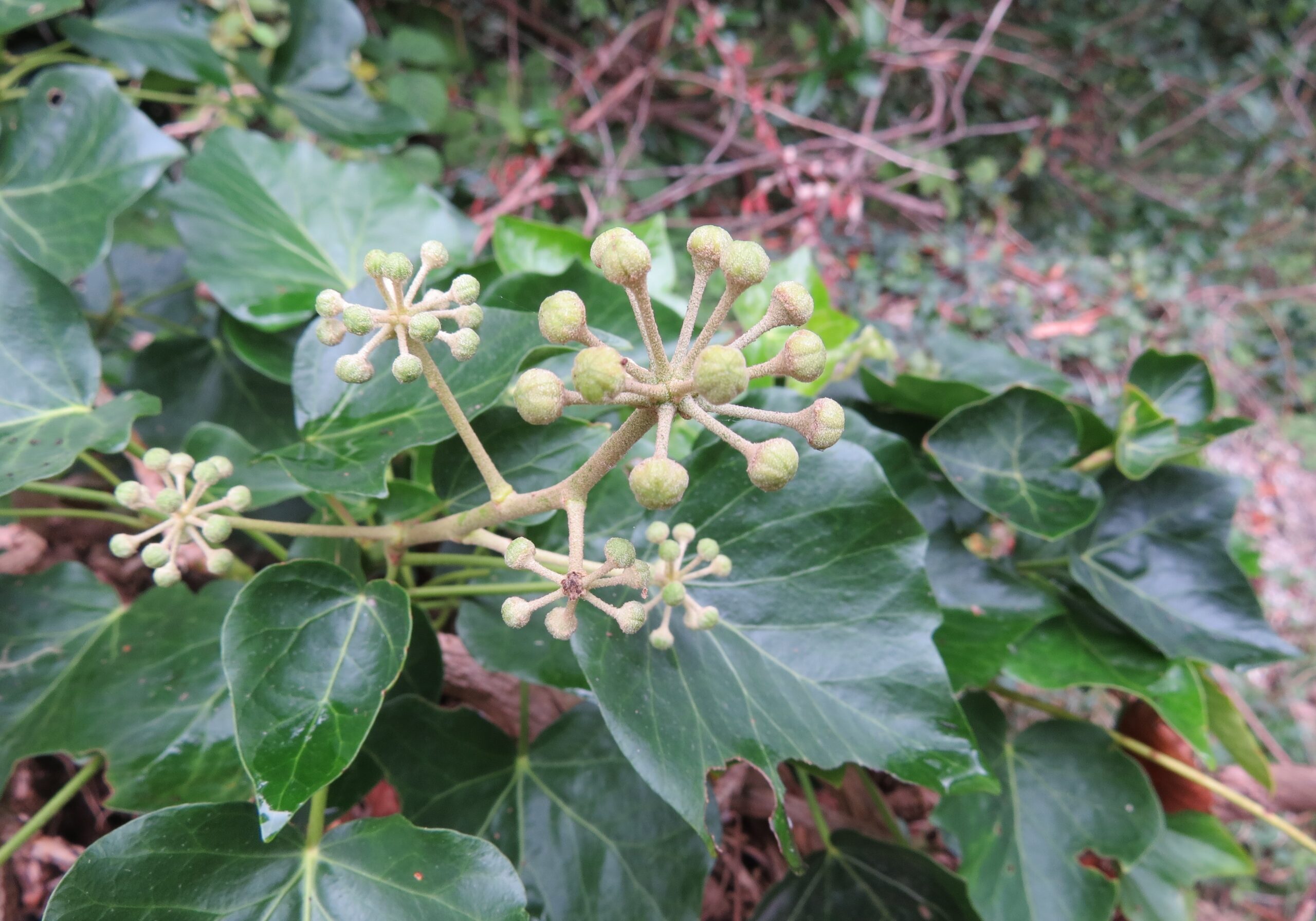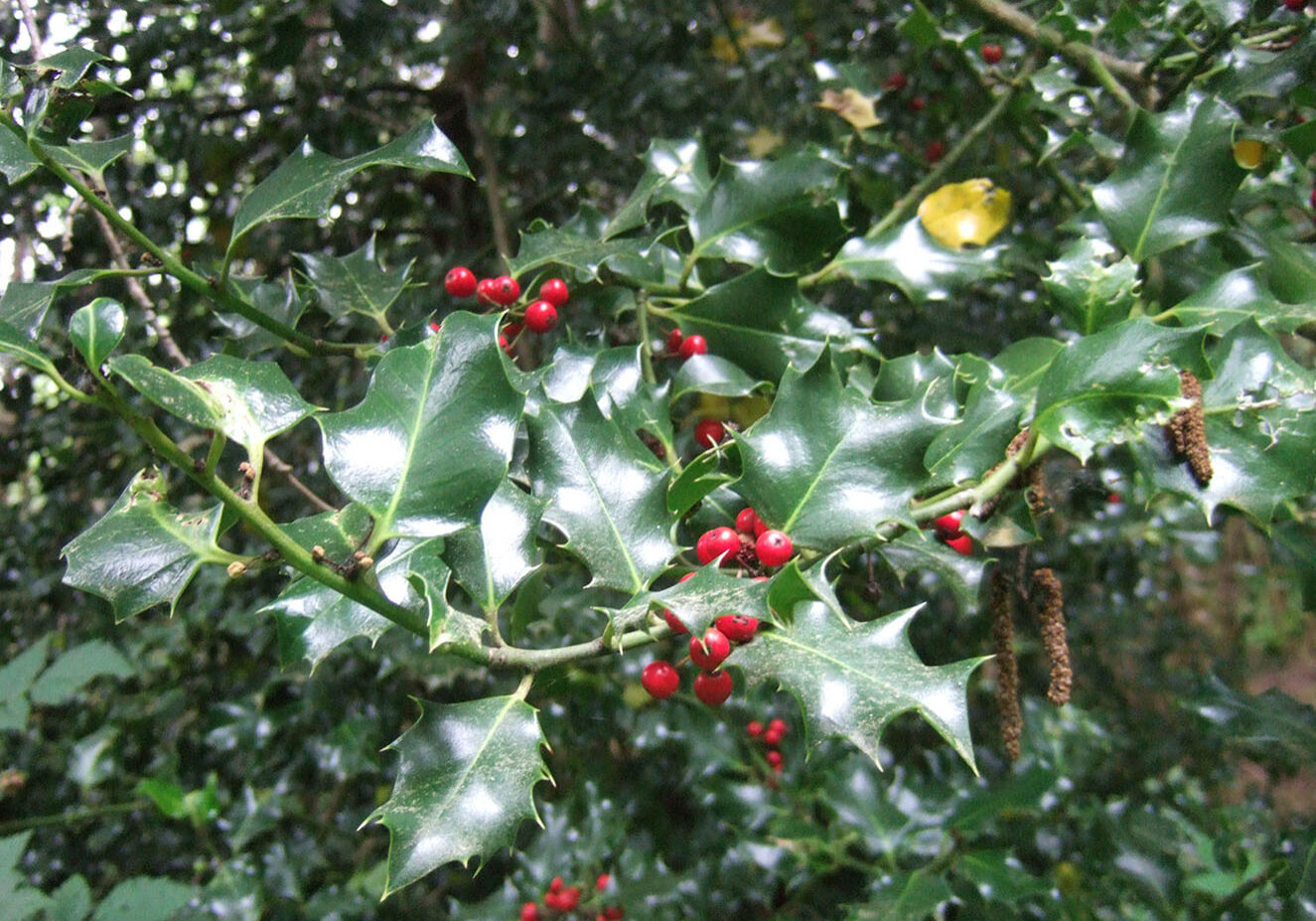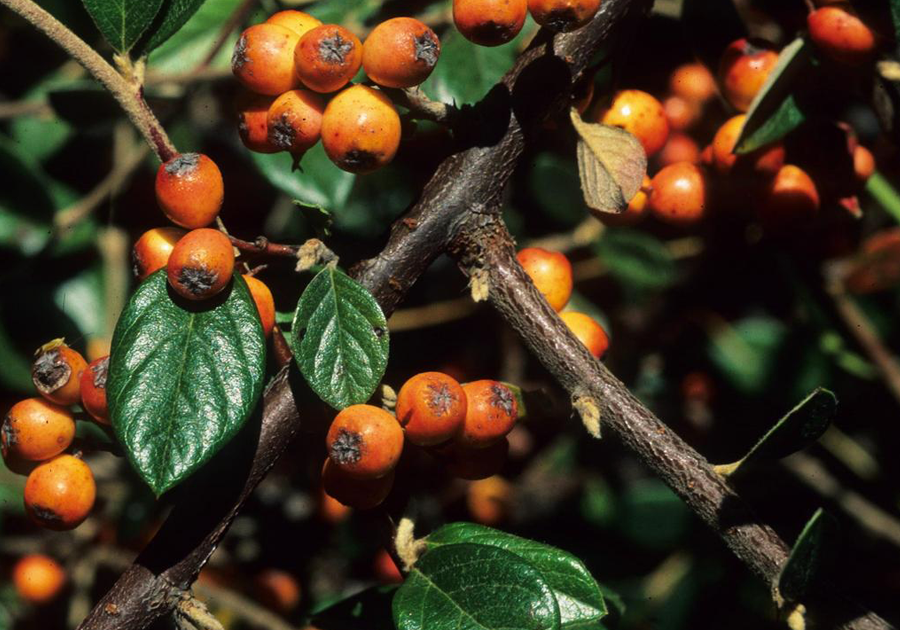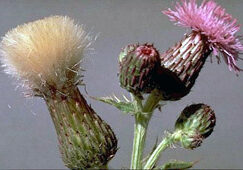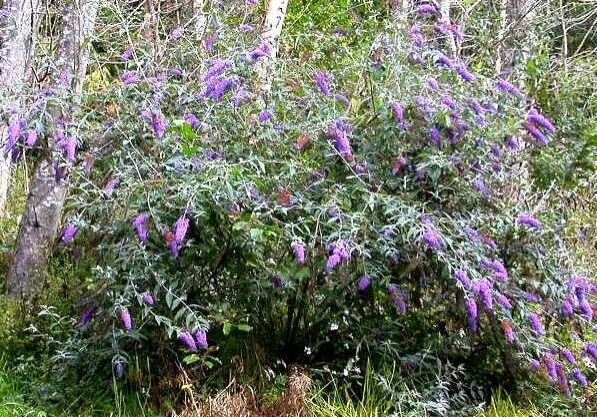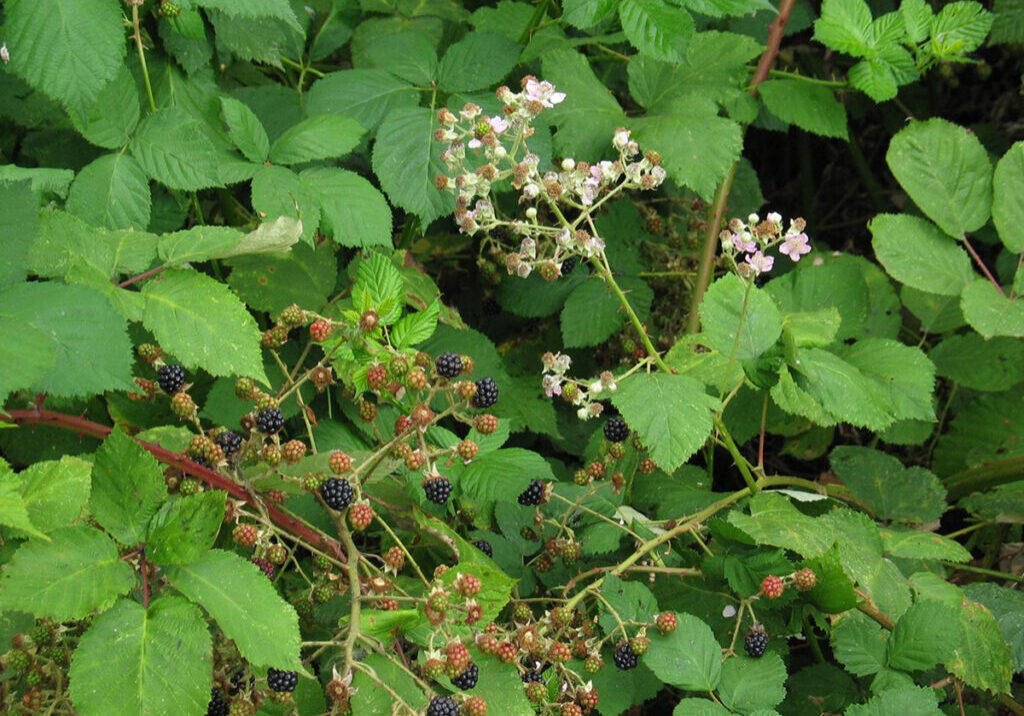
Description
Himalayan (“Armenian”) blackberry is widely distributed throughout the South Coast and is considered the most widespread and economically disruptive noxious weed in western Oregon. In the South Coast CWMA area, it thrives in most habitats, especially full sun, but is particularly damaging to riparian (streamside) areas because it can blend in with the many other riparian species and go unnoticed until it’s firmly established. Native to Asia (the Armenian region), Himalayan blackberry was introduced from India via England—intentionally, for its berry production—presumably without an understanding of how devastating it would be to native ecosystems.
How to recognize
Himalayan blackberry is probably one of our most recognizable invasive species, usually growing in large, impenetrable thickets reaching 13 feet in height. The reddish, spiny stems are often over 20 feet long, and are covered in leaves with toothed edges that resemble large rose leaves. In early summer, the plants produce white to light pink flowers with five petals.
What to do if you find it
REPORT
No need to report.
REMOVE
Blackberry reproduces through rooting at cane tips, by root fragments, or by seeds dispersed by birds and other animals, which allow it to expand rapidly across any landscape. It also has deep roots that are difficult to remove; thus, control requires persistence (at least two years of intense effort). For specific best management practices for control, visit https://plants.usda.gov/plantguide/pdf/pg_ruar9.pdf or reach out to your local watershed council. At this time, no approved biological control agent is available for release in Oregon.
REPLACE
Once the blackberry has been removed over the course of 1-2 years, replant the area with a dense cover of native plants that are adapted to that habitat. For planting ideas and assistance, contact your local watershed council (Coos Watershed Association, Coquille Watershed Association, Curry Watersheds Partnership) or Soil and Water Conservation District.
Additional Information
There are other non-native blackberries in Oregon; Himalayan is the most robust. There is one native species, the trailing blackberry (Rubus ursinus), which is much smaller than Himalayan blackberry, growing only 2-5 feet high, generally grows along the ground, has narrow prickly stems, and has only three narrower leaflets instead of five rounded leaflets like the Himalayan blackberry.
External links for more info:
https://www.oregon.gov/ODA/shared/Documents/Publications/Weeds/ArmeniaBlackberryProfile.pdf
- All Flower Colors
- Orange & Yellow
- Pink & Purple
- White & Green
